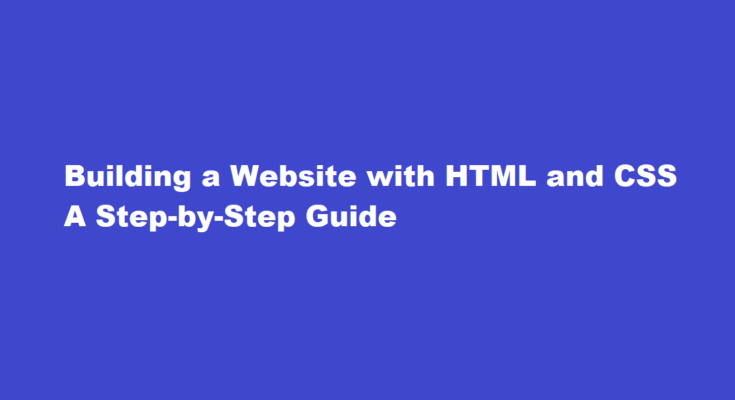Introduction
In today’s digital age, having a strong online presence is crucial. Building a website from scratch might seem daunting, but with the right tools and knowledge, anyone can create a professional-looking site. This article will guide you through the process of building a website using HTML and CSS, the foundation of web development.
Understanding HTML
HTML, short for HyperText Markup Language, forms the backbone of every web page. It provides the structure and content of the site. To begin, open a text editor and create a new file with the “.html” extension. Start with the HTML doctype declaration
<!DOCTYPE html>
<html>
<head>
<title>Your Website Title</title>
</head>
<body>
<!– Content goes here –>
</body>
</html>
Inside the <body> tag, you can add various elements such as headings, paragraphs, images, links, and more. Each element is enclosed within opening (<>) and closing (</>) tags, which define its purpose and behavior. For instance, to create a heading, use the <h1> tag:
<h1>Welcome to My Website</h1>
Styling with CSS
CSS, or Cascading Style Sheets, allows you to customize the appearance of your web pages. Create a new file with the “.css” extension and link it to your HTML file using the <link> tag. Place the following line inside the <head> section:
<link rel=”stylesheet” type=”text/css” href=”styles.css”>
Now, you can define styles in the CSS file. Select an HTML element by its tag, class, or ID, and specify properties like font size, color, margin, and padding. For example, to style all headings, you can use:
h1 {
color: blue;
font-size: 24px;
}
To target elements with a specific class or ID, use the .class and #id selectors respectively. Applying CSS rules consistently throughout your site ensures a cohesive design.
Building a Navigation Menu
A well-designed navigation menu helps users explore your website easily. Create a navigation bar by wrapping a list of links in an unordered list (<ul>) element. Use the <nav> tag to define the navigation area. Apply CSS styles to position the menu horizontally or vertically, add background colors, and set hover effects to improve user experience.
Creating Responsive Layouts
With the increasing use of mobile devices, it is essential to create websites that adapt to different screen sizes. Use CSS media queries to adjust your layout based on the device’s screen width. This technique enables you to create responsive designs that look great on desktops, tablets, and smartphones.
Adding Images and Multimedia
Enhance your website with engaging visuals and multimedia content. Use the <img> tag to insert images and specify the source file. Set appropriate alt attributes for accessibility. Incorporate videos and audio files using HTML5’s <video> and <audio> tags, respectively. Consider optimizing media files for faster loading times.
FREQUENTLY ASKED QUESTIONS
What is FAQS on a website?
It stands for frequently-asked questions, and it’s a page on a website that gives quick answers to customer questions. The idea is to keep the answers short and direct so that people find info quickly.
How are HTML and CSS usually used for websites?
HTML and CSS are scripting languages used to create a web page and web applications. HTML provides web page structure, whereas CSS is mainly used to control web page styling.
Conclusion
Building a website using HTML and CSS empowers you to create a unique online presence. By understanding the basic structure of HTML and leveraging CSS for styling, you can design visually appealing and user-friendly websites. With continuous learning and practice, you can explore advanced concepts and further enhance your web development skills.
Read Also : Enhancing Concentration and Focus Unlock Your Full Potential



